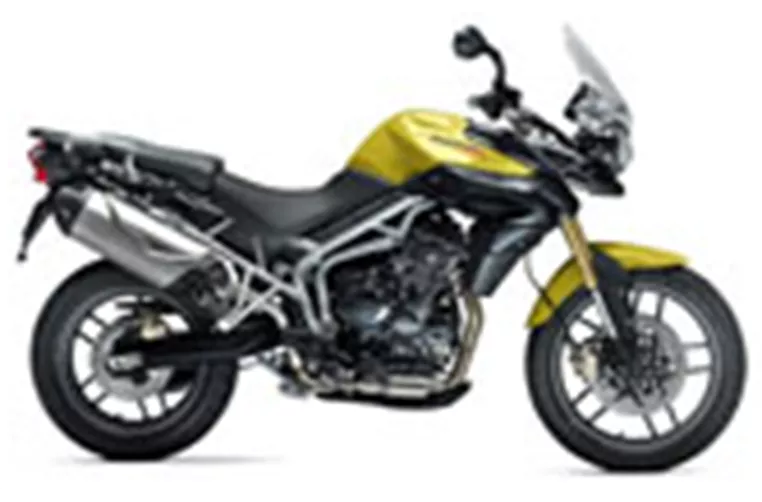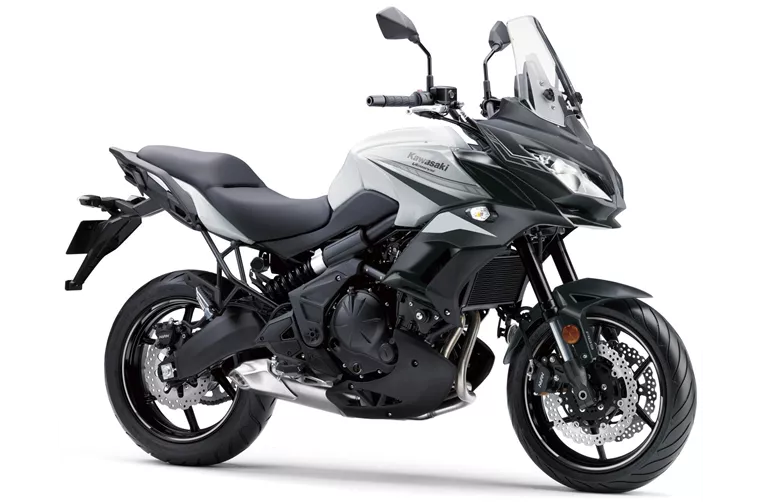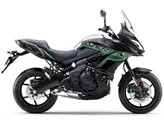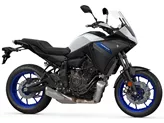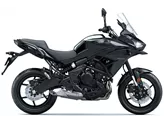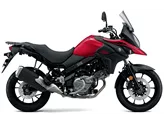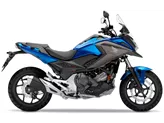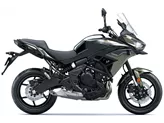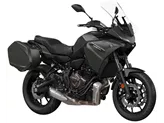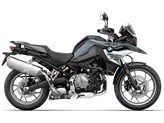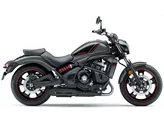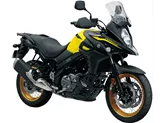Triumph Tiger 800 2011 vs. Kawasaki Versys 650 2020
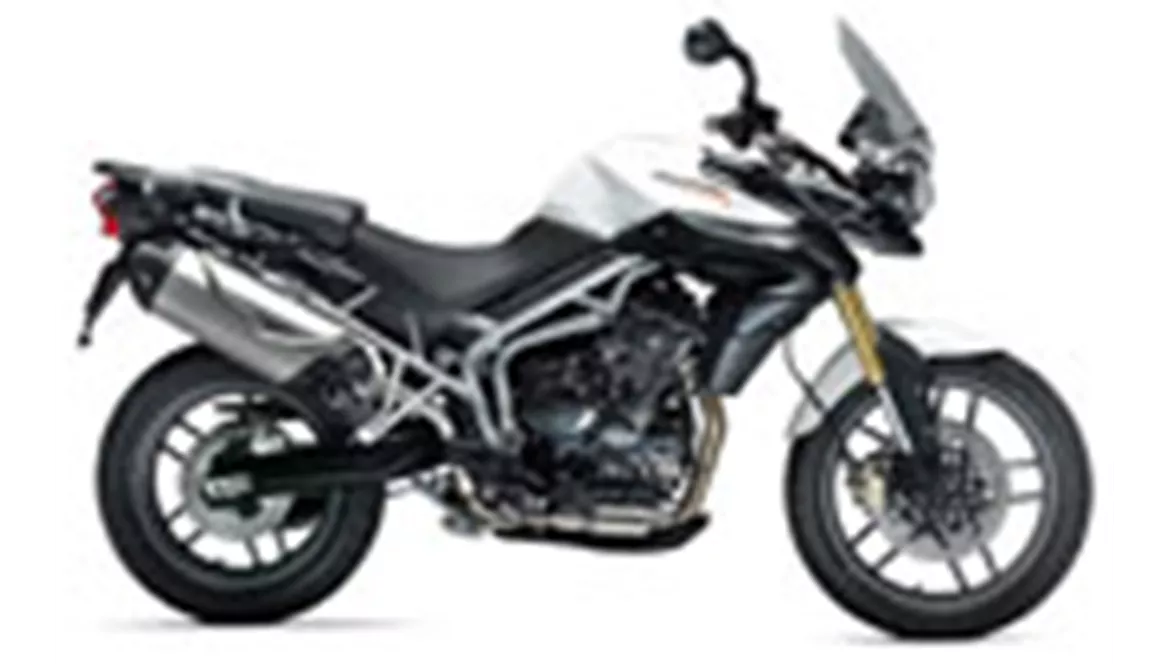
Triumph Tiger 800 2011
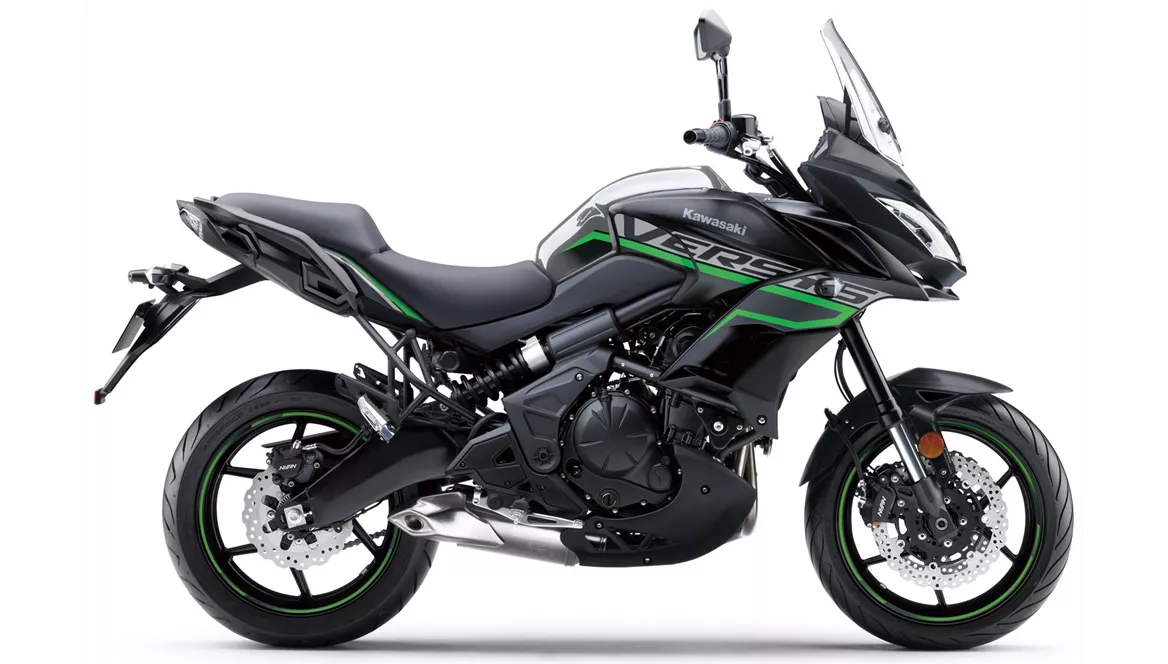
Kawasaki Versys 650 2020
Overview - Triumph Tiger 800 2011 vs Kawasaki Versys 650 2020
The Triumph Tiger 800 2011 and the Kawasaki Versys 650 2020 are both enduro motorcycles with similar technical specifications. However, they have some notable differences in terms of power, dimensions, and weight.
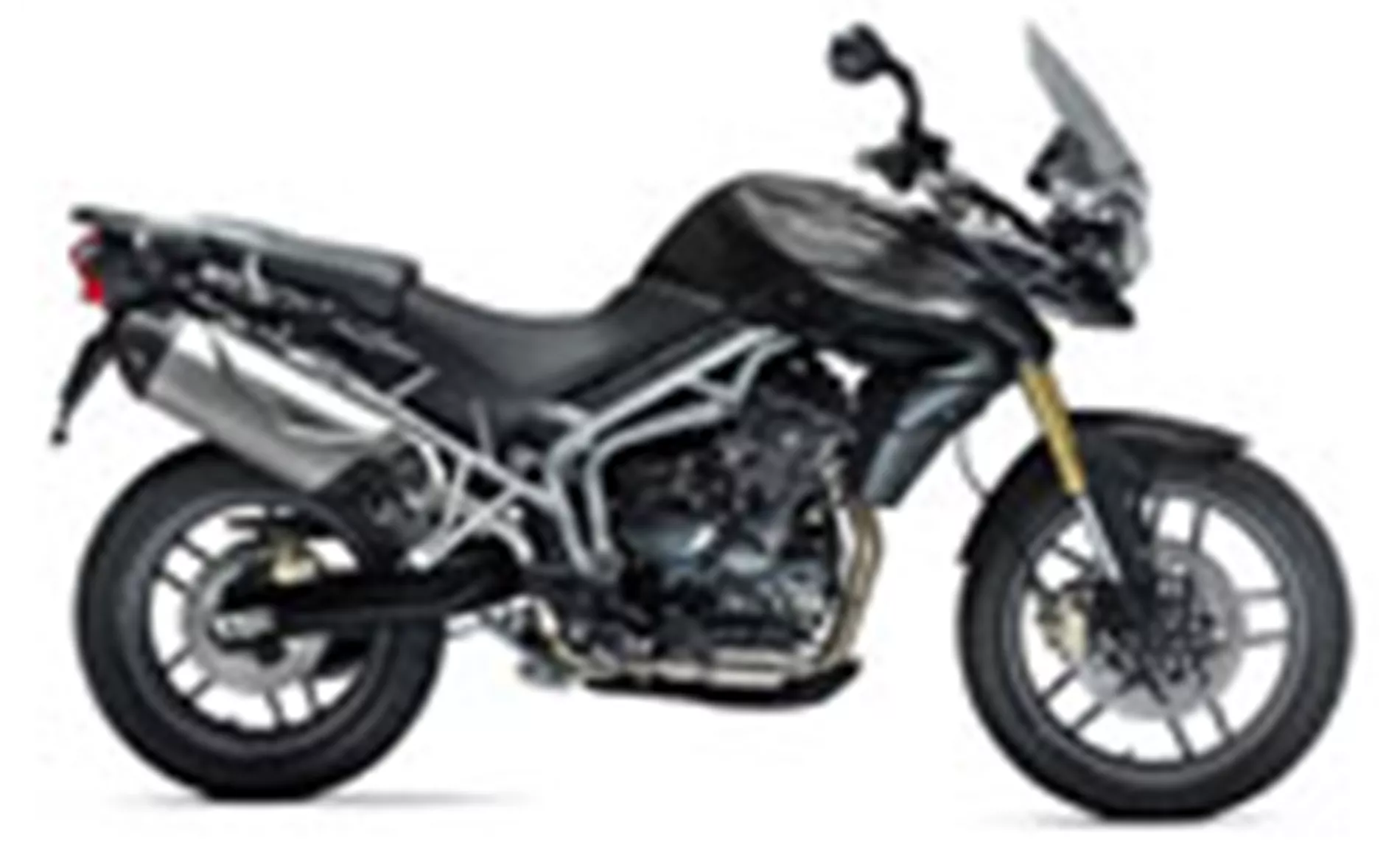
Triumph Tiger 800 2011
Starting with the Triumph Tiger 800 2011, it is equipped with an inline 3-cylinder engine with a displacement of 799cc. This engine produces a power output of 95 HP and a torque of 79 Nm. The transmission is chain-driven, and the bike has a top speed of around 130 mph. In terms of suspension, both the front and rear suspension are adjustable for rebound. The front tire has a diameter of 19 inches, while the rear tire has a width of 150 mm and a diameter of 17 inches. The wheelbase is 1555 mm, and the seat height is 830 mm. The bike weighs 210 kg and has a fuel tank capacity of 19 liters. One of the strengths of the Triumph Tiger 800 2011 is its smooth power delivery, providing a homogeneous development of power. Additionally, it offers a comfortable and smooth ride, with a loud exhaust sound. Another advantage is the presence of ABS, which enhances safety while riding. However, a potential weakness of this model is that the gearbox can feel a bit stiff during gear changes.
On the other hand, the Kawasaki Versys 650 2020 features an inline 2-cylinder engine with a displacement of 649cc. This engine generates a power output of 69 HP and a torque of 64 Nm. Similar to the Triumph Tiger 800 2011, it has a chain-driven transmission and a top speed of around 130 mph. The suspension, both front and rear, can be adjusted for rebound. The front tire has a diameter of 17 inches, while the rear tire has a width of 160 mm and a diameter of 17 inches. The wheelbase is shorter than the Triumph Tiger 800 2011, measuring 1415 mm. The seat height is slightly higher at 840 mm. The bike weighs 214 kg and has a larger fuel tank capacity of 21 liters. One of the strengths of the Kawasaki Versys 650 2020 is its great travel comfort, providing a pleasant and comfortable riding experience. The chassis is also well-designed, offering a nice balance between comfort and agility. The bike is easy to handle and has a seat position that is suitable for long journeys. However, some weaknesses of this model include vibrations in the footpegs and a slightly heavy weight. Additionally, the ABS cannot be deactivated, which may limit the rider's control in certain situations.

Kawasaki Versys 650 2020
In conclusion, the Triumph Tiger 800 2011 and the Kawasaki Versys 650 2020 are both capable enduro motorcycles with their own strengths and weaknesses. The Triumph Tiger 800 2011 offers a smooth power delivery, comfortable ride, and the presence of ABS for enhanced safety. However, the gearbox can feel a bit stiff. On the other hand, the Kawasaki Versys 650 2020 provides great travel comfort, a well-designed chassis, and easy handling. However, it has vibrations in the footpegs, a slightly heavy weight, and the inability to deactivate the ABS. Ultimately, the choice between these two models would depend on the rider's preferences and priorities.
Technical Specifications Triumph Tiger 800 2011 compared to Kawasaki Versys 650 2020
Pros and Cons in comparison
Pros and Cons in comparison
Triumph Tiger 800 2011

Parece que a Triumph construiu uma mota que fez da caraterística mais pronunciada das wildcats - a flexibilidade - o princípio dominante da sua dinâmica. A Tiger é elegante, controlada e deliberada na utilização da sua potência.
Kawasaki Versys 650 2020
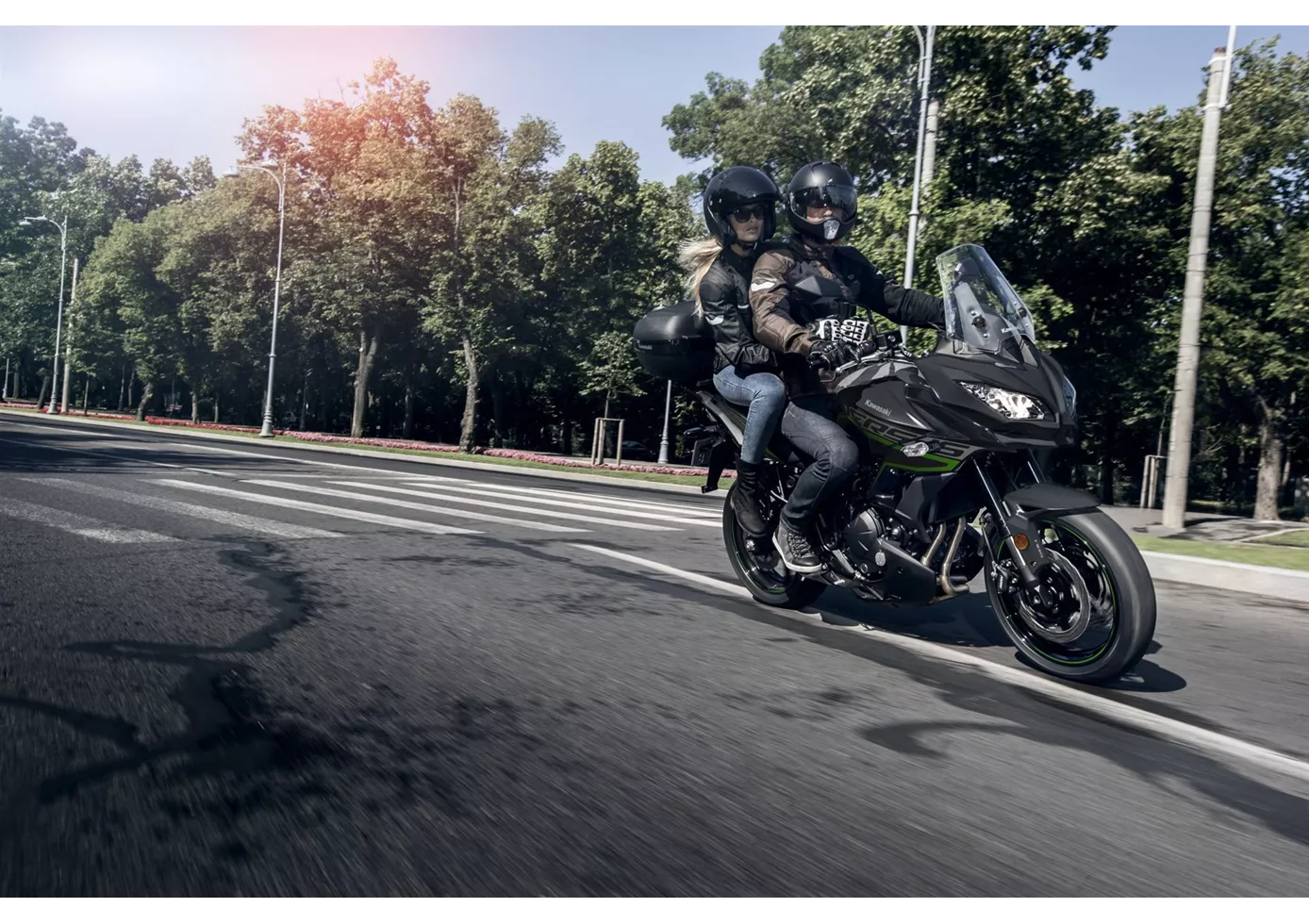
O modelo 2019 da Kawasaki Versys apresentou-se como uma máquina de turismo confortável, estável e animada. A mota é versátil e oferece um elevado valor de utilidade. É uma máquina de turismo de pleno direito que é um prazer conduzir em passeios prolongados. A moto oferece uma excelente relação preço/desempenho.
Price Comparison Avarage Market Price Triumph Tiger 800 vs Kawasaki Versys 650
There are a few key differences between a Triumph Tiger 800 2011 and a Kawasaki Versys 650 2020. In terms of price, the actual average price of a Triumph Tiger 800 2011 is about 4% higher. Compared to Kawasaki Versys 650 2020 there are less Triumph Tiger 800 2011 bikes available on the 1000PS.de Marketplace, specifically 7 compared to 11. It takes less time to sell a Triumph Tiger 800 with 46 days compared to 137 days for a Kawasaki Versys 650. Since model year 2011 1000PS.de editors have written 10 reviews for the Triumph Tiger 800 and 39 reviews for the Kawasaki Versys 650 since model year 2007. The first review for the Triumph Tiger 800 was published on 01/11/2010 and now has more than 8 200 views. This compares to more than 3 900 views for the first review on Kawasaki Versys 650 published on 25/07/2006.
